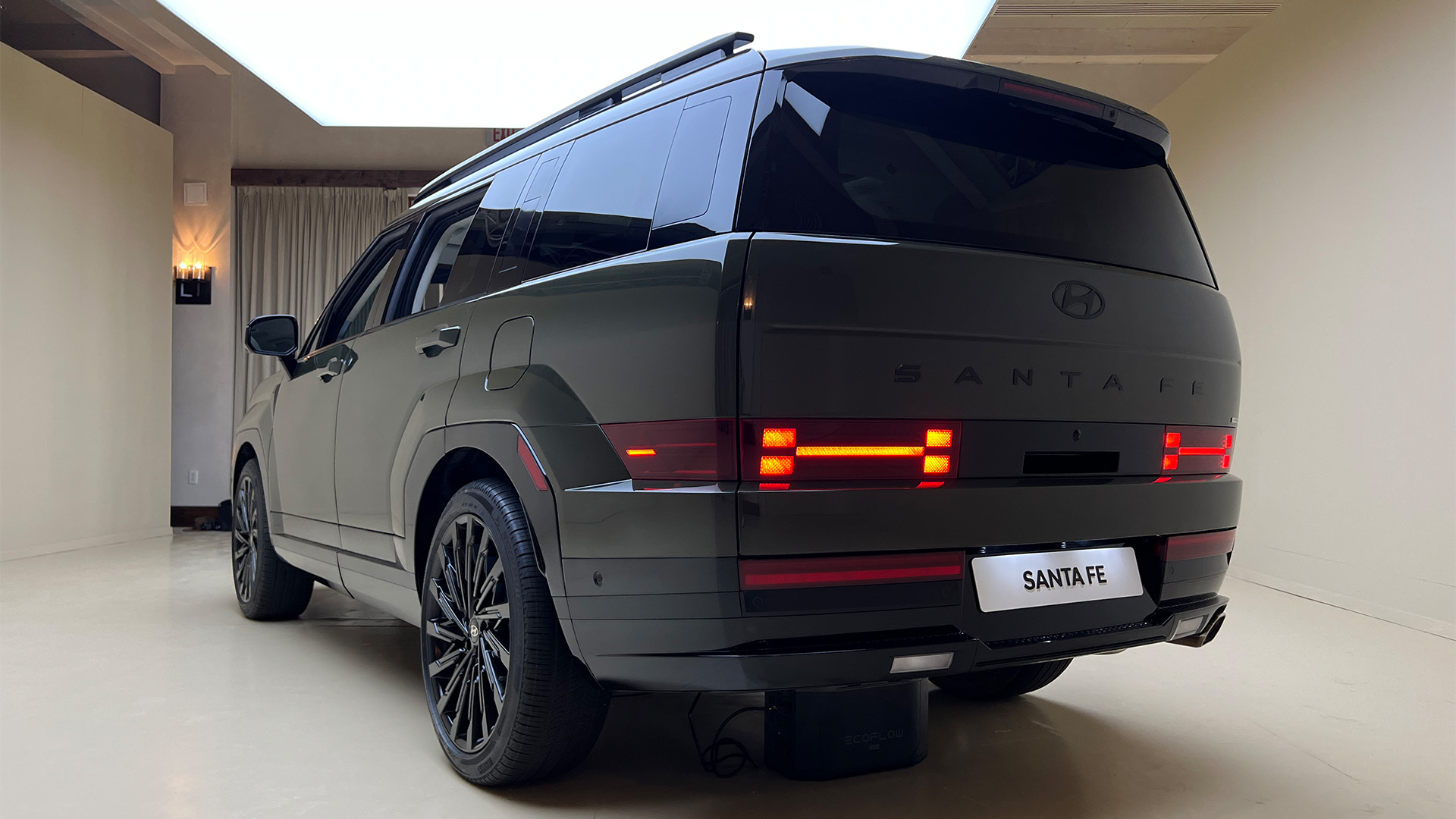

The 2024 Hyundai Santa Fe is totally restyled to be bigger and boxier. It follows an entirely new design language, and if you ask me, it looks damn good. But there’s one artistic choice that Hyundai made that is still actively perplexing people: the taillights.
The taillights on the new 2024 Hyundai Santa Fe are mounted extremely low. One could argue that they even look out of place, which led critics to go as far as “fixing” the SUV using Photoshop. So why exactly did Hyundai go this route?

It’s important to first understand that Hyundai’s decision to mount the Santa Fe’s taillights practically on the pavement is one made in the name of engineering. SangYup Lee, Hyundai’s global head of design, clarified by saying that one of the biggest reasons they chose to place them so low was to ensure that the tailgate width wasn’t compromised through traditional mounting means.
“You always end up with big struts when it comes up to [an] SUV,” Lee said at the Santa Fe’s North American press launch. “When you have a tail lamp like a conventional car, you have a tail lamp up [higher] and the strut has to move inboard [on the tailgate]. This really reduces the width of the tailgate quite significantly. Therefore we deliberately bring the taillight under the strut.”
Let’s dig into Lee’s answer a bit more.
When popping the hatch open and watching the tailgate raise, it becomes immediately apparent that the Santa Fe has some rather huge struts supporting the hatch. The mounting points for the struts are also mounted low on the vehicle body, which is unusual compared to the outgoing Santa Fe which mounts the struts nearly at hinge level on the vehicle body and extends far outward on the hatch when open.
The trade-off here was made to increase the available real estate for the tailgate opening and rear window, which is usually compromised by the strut-mount location. But in order to do this, Hyundai’s engineers needed to mount the struts where a typical vehicle would place its taillights, leaving no room for a recession in the hatch’s sheet metal that would normally be made to flush mount the hunks of illuminated plastic. Rather than squish the taillight inward towards the center of the hatch—which, let’s admit, would have probably looked even goofier—Hyundai’s engineers decided to mount the taillights lower than normal.

Interestingly, Lee says that this decision was made easier by giving the new Santa Fe a novel design that goes against the grain of most modern automakers.
“This also gives us a lot of freshness in the design,” said Lee. “Back in the 1970s and 1980s, a lot of SUVs and even, like, a Volkswagen van—the Bus—and Porsche 911 had low taillights. You don’t see a lot of low taillights these days. I don’t know [why companies don’t do this anymore]. Maybe they follow the trends. But we’re always thinking ‘What is the trend? Let’s think a little differently.’ It adds a little freshness to the vehicle.”
Say what you want about the Santa Fe’s new design. It’s different, but the design certainly has people talking. If anything, it’s on-brand considering the rest of Hyundai’s recently introduced models. Just think of the design language behind the Ioniq 5, the Santa Cruz, or the new Sonata. Each vehicle is uniquely itself, and so is the Santa Fe. One thing is certain: in a sea of otherwise beige-styled SUVs, you’ll know exactly what you’re behind when these hit the road.
Got a tip or question for the author? Contact them directly: rob@thedrive.com